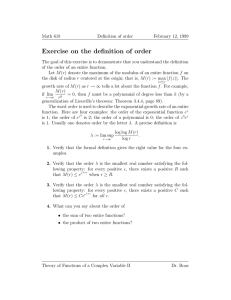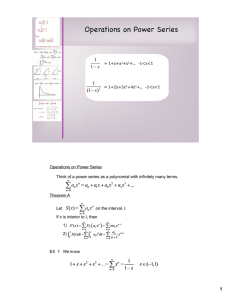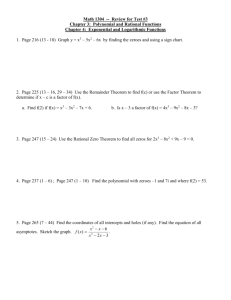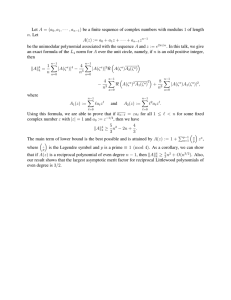Math5700 Notes Section 3.3 Problems Involving Real Functions Consider this pattern of toothpicks.
advertisement
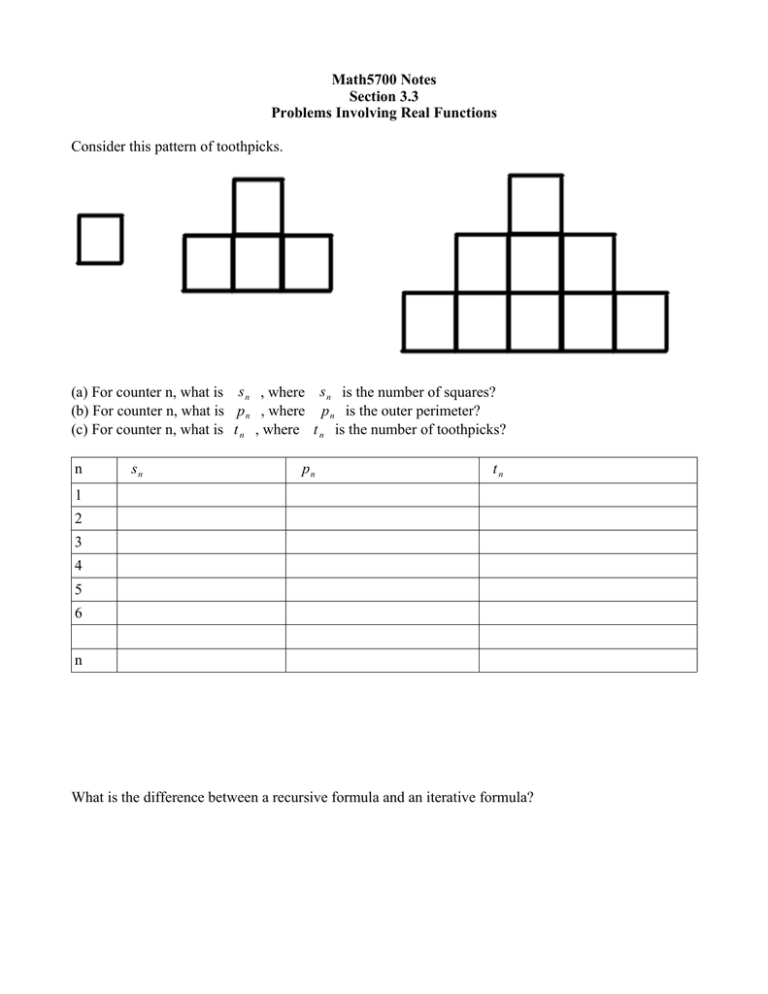
Math5700 Notes
Section 3.3
Problems Involving Real Functions
Consider this pattern of toothpicks.
(a) For counter n, what is s n , where s n is the number of squares?
(b) For counter n, what is p n , where p n is the outer perimeter?
(c) For counter n, what is t n , where t n is the number of toothpicks?
n
sn
pn
tn
1
2
3
4
5
6
n
What is the difference between a recursive formula and an iterative formula?
Consider this sequence, given in the table.
an
n
1
5
2
19
3
59
4
137
5
265
6
455
...
n
??
Can you find an iterative formula for
an ?
Another example: Let a n = sum of the 4th powers of integers from 1 to n. Determine if a polynomial
will fit the data. If so, what degree is it? How would you find the polynomial?
Theorem 3.15: Suppose that f : ℝ →ℝ .
(a) If f is linear, then f has the following property: There is a real m such that f(x+1) – f(x) = m
∀ x ∈ℝ .
(b) If f has the above property, then the linear function L defined by L(x) = mx + f(0)
∀ x ∈ℝ agrees with f at all x ∈ℤ+ .
Corollary: A real sequence { f n } has a constant difference d, i.e.
f n=dn+ f 0 ∀ n≥0 .
d = f n+1 − f n
∀ n≥0 iff
Theorem 3.17: Suppose f : ℝ →ℝ . If the nth difference function Δn f of f is a nonzero
constant, then there exists an nth-degree polynomial that agrees with the function f at every
nonnegative integer.
Prove:
(1) Define Q ( x )=ax 2+bx+c where a , b , c ,∈ℝ . Show that Δ2 Q is constant ∀ x ∈ℝ .
(2) Given a sequence { f n } with constant second differences. By induction, prove that
1
1
Q ( x )= dx 2 +( f (1)− f (0)− d ) x+ f (0) agrees with f for all nonnegative integers. (I
2
2
interchanged the notation f (n)= f n .)
(3) From #2, what does this mean about the iterative formula for
fn ?
Consider this sequence, given in the table.
an
n
1
5.5
2
13.2
3
31.7
4
76
5
182.5
6
437.9
...
n
??
Can you find an iterative formula for
Notation: Let Θ f ( x)=
an ?
f ( x+1)
be the first quotient operator.
f (x )
Theorem 3.16: Suppose that f : ℝ →ℝ .
(a) If f is an exponential function, then f has the following property: There is a real b such that
f ( x +1)
=b
∀ x ∈ℝ .
f (x)
(b) If f has the above property, then the exponential function G defined by G ( x )= f (0) b x
∀ x ∈ℝ agrees with f at all x∈ℤ+ .
Corollary: A real sequence { g n } has a constant ratio r, i.e. r=
g n=g 0 r n ∀ n≥0 .
What is the “growth rate” of exponential function?
g n+1
gn
∀ n≥0 iff

